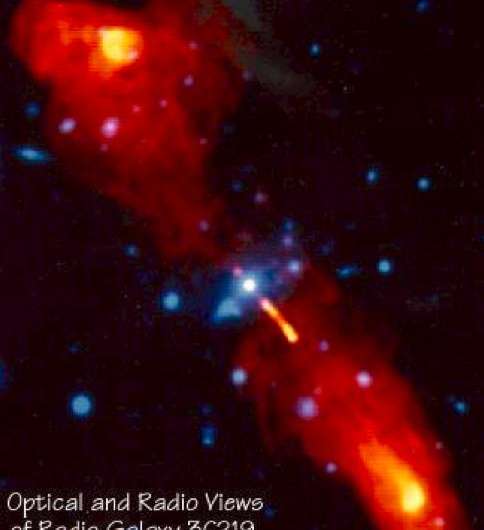Star formation near supermassive black holes

Most if not all galaxies are thought to host a supermassive black hole in their nuclei, a finding that is both one the most important and amazing in modern astronomy. A supermassive black hole grows by accreting mass, and while growing its feeding frenzy is not hidden from our view—it generates large amounts of energy. During the evolutionary phase in which it is most active, the object is known as an active galactic nucleus (AGN). Although there is a difference of a factor of about one billion in physical size scales between the black hole's accreting environment and its host galaxy, the two sizes are found to be closely correlated, suggesting that there is some kind of feedback between the growth of the black hole and that of its host galaxy. Understanding what the feedback mechanisms are, and how they affect the growth of the galaxy (in particular its star formation), are of paramount importance for our understanding galaxy formation and evolution. Both processes are thought to peak in activity when the universe was only a few billion years old. Neither is particularly well understood.
CfA astronomers Belinda Wilkes, Joanna Kuraszkiewicz, Steve Willner, Matt Ashby, and Giovanni Fazio, along with their colleagues, used the Herschel Space Telescope to study the infrared emission from sixty-four bright, radio and X-ray emitting galaxies with AGN nuclei, and which contain more than one hundred billion solar-masses of stars. Their set is a complete sample of objects of a well-defined class dating from about seven billion years ago, and includes some of the most powerful quasars known. All the objects have large bipolar jets that were driven into intergalactic space by the AGN. The scientists set out to determine how much of the luminosity in these powerful galaxies was due to the AGN and how much was due to star formation activity. The infrared is emitted by dust heated by these two processes, and details of the emission (its typical temperature for example) can help sort out the relative contributions of the two processes.
The astronomers conclude that the star formation rates in these monsters run into the hundreds of solar-masses per year, and therefore reject suggestions that the AGN outflows will quench the star formation in such galaxies. Whatever the details of the growth feedback mechanism, therefore, they do not suppress the star formation. Nevertheless, despite the active star formation underway, the majority of the luminosity is due to the AGN, even during periods when the star formation is most active. Their paper is also significant because it can explain the principal observational differences between the galaxies in this set simply by the orientation of their disk to our line-of-sight, with the large, double-lobed jet sources being seen edge on and the quasars being seen more face-on.
More information: "Star Formation in z > 1 3CR Host Galaxies as Seen by Herschel," A&A, 575, 80, 2015. adsabs.harvard.edu.ezp-prod1.h … arvard.edu/abs/2015A%26A...575A..80P
Provided by Harvard-Smithsonian Center for Astrophysics



















